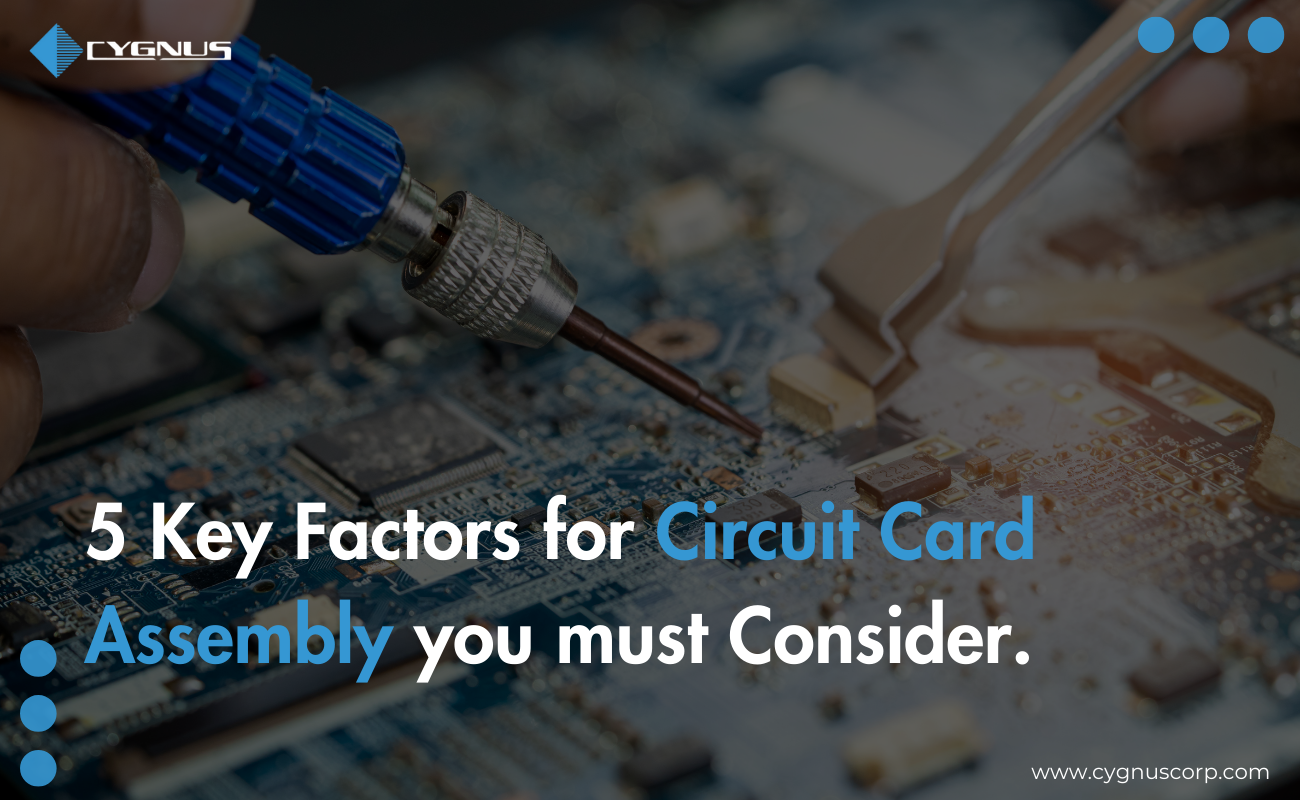Circuit card assembly, also known as printed circuit board (PCB) assembly, is a crucial process in the manufacturing of electronic devices. A PCB is the foundation upon which all electronic components are placed, and the quality of its assembly directly affects the performance, reliability, and longevity of the final product.
However, in today’s rapidly changing technological era, ensuring that your circuit card assembly is top-notch is more important than ever. This involves careful planning, precise execution, and adherence to industry standards.
Whether you are a seasoned professional or new to the field, it is crucial to know the key factors that influence circuit card assembly that can help you achieve optimal results.
-
Component Selection
The first factor to consider is the selection of components. Choosing the right components is essential for the functionality and reliability of the assembled circuit card.
Here are some tips:
– Quality: Always opt for high-quality components from reputable manufacturers. Poor-quality components can lead to failures and reduce the lifespan of the device.
– Compatibility: Ensure that the components are compatible with the PCB design and each other. Incompatibility can cause malfunctions and require costly rework.
– Availability: Consider the availability of components. Using hard-to-find parts can delay production and complicate future repairs or upgrades.
-
PCB Design
A well-designed PCB is the backbone of a successful assembly. The design phase is where you can prevent many potential issues:
– Layout: Pay attention to the layout of the components on the PCB. Proper spacing and placement are crucial to avoid interference and ensure easy soldering.
– Trace Routing: Proper routing of the electrical traces (the conductive paths) ensures that signals and power are delivered efficiently. Avoid sharp angles and keep traces as short as possible.
– Thermal Management: Good thermal management is essential to prevent overheating. Use thermal vias and heat sinks where necessary.
-
Soldering Techniques
Soldering is the process of joining components to the PCB using a molten metal alloy. The quality of soldering can make or break the assembly. Therefore follow these tips:
– Type of Solder: Choose the appropriate type of solder (lead-based or lead-free) based on regulatory requirements and the operating environment of the device.
– Soldering Method: Decide on the method of soldering (hand soldering, wave soldering, or reflow soldering) based on the complexity of the assembly and the volume of production.
– Inspection: Thoroughly inspect solder joints to ensure they are free from defects such as cold joints, bridges, and voids.
-
Testing and Quality Control
Testing is a critical step to ensure that the assembled circuit card functions as intended. Moreover, if you implement robust quality control measures, it can save you time and money in the long run.
– Visual Inspection: Conduct visual inspections to check for obvious defects like misaligned components and poor solder joints.
– Electrical Testing: Use in-circuit testing (ICT) and functional testing to verify that the circuit performs correctly under various conditions.
– Environmental Testing: Subject the assembled PCB to environmental tests (such as temperature cycling and humidity testing) to ensure it can withstand real-world conditions.
-
Assembly Environment
The environment in which the circuit card assembly takes place can significantly impact the quality of the final product, therefore:
– Cleanliness: Maintain a clean and dust-free environment to prevent contamination, which can cause defects and reliability issues.
– Temperature and Humidity Control: Keep the assembly area at a controlled temperature and humidity level to avoid issues such as moisture absorption by the PCB.
– Electrostatic Discharge (ESD) Protection: Implement ESD protection measures, such as grounding straps and anti-static mats, to prevent damage to sensitive components.
Conclusion
Circuit card assembly is a meticulous process that demands attention to detail at every step. If you focus on component selection, PCB design, soldering techniques, testing, and quality control and maintain a proper assembly environment, you can ensure the production of reliable and high-performance circuit card assemblies.
Additionally, taking these factors into account not only enhances the quality of your assemblies but also contributes to the overall success of your electronic products.




